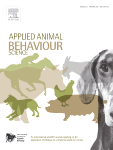Document type: scientific expertise published on the FRCAW
Author: French Reference Centre for Animal Welfare (FRCAW)
Preview : Protection of farmed fish at slaughter
Context: At the first meeting of the fish welfare platform set up by the French Inter-professional Committee on Aquaculture Products (Comité Interprofessionnel des Produits de l'Aquaculture, CIPA), a need was identified for scientific information on fish welfare during slaughter, particularly in connection to stunning. To meet this need, the FRCAW, in agreement with CIPA, proposed a literature review. Much work is already available on stunning and slaughter conditions for the various species of fish farmed in Europe. However, no literature review exists that specifically addresses the situation in France. Moreover, the pre-stunning phase is generally not dealt with in detail, despite its impact in terms of animal welfare. This document therefore aims to identify:
- the factors likely to compromise the welfare of fish in the French fish farming sector from the time they leave the rearing pond or tank to their death
- the causes of these factors
- the stages involved in the process, i.e., pre-stunning, stunning, killing, etc.
- the impacts on animal welfare of the factors identified
- the methods to measure these impacts
- the preventive/corrective actions to limit negative outcomes for fish welfare
Conclusions/recommendations: Only the main stunning and slaughtering practices studied in the literature are referred to in this summary. Table 11 of the opinion provides a summary of the practices studied in this report, listing their advantages and disadvantages in terms of fish welfare. Although fish welfare is the focus of the analysis of stunning and killing methods set out in this document, certain advantages and disadvantages from a technical perspective have also been included in Table 11 to provide the context for decisions made on the ground on whether to use or avoid the practices under review. It must be borne in mind that, for all the practices listed in the table below, the major contributory factors in effective stunning and the welfare of fish during slaughter are the correct training of the operating team, the use of suitable equipment that is properly calibrated and maintained, the ability to recognise when a fish has been effectively or poorly stunned, and the availability of emergency equipment. Taking into account the findings of this review and the expert opinions expressed on the subject, the expert committee has formulated 9 recommendations. (...)
To illustrate the practices described in this literature review, 14 technical diagrams have been produced by the FRCAW. These depict practices that are currently in use in the sector, but they should not be assumed to constitute examples of good practice.
Link to pdf

From the FRCAW website





